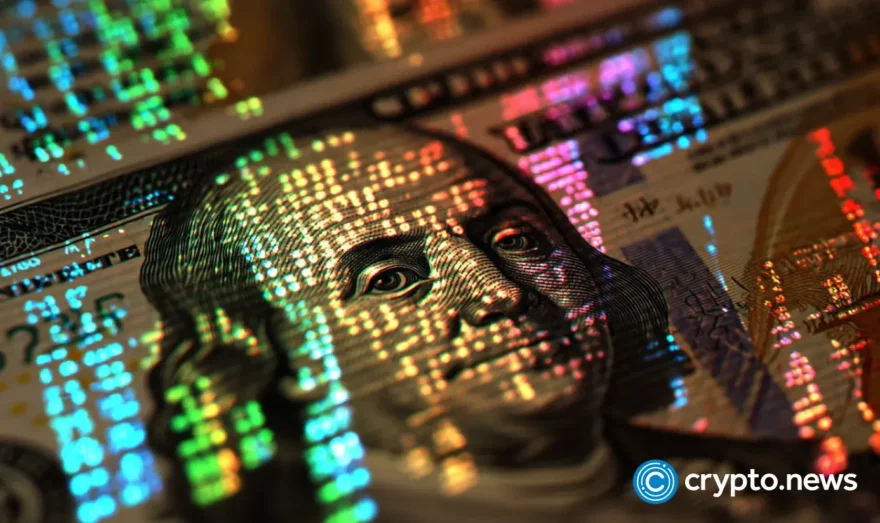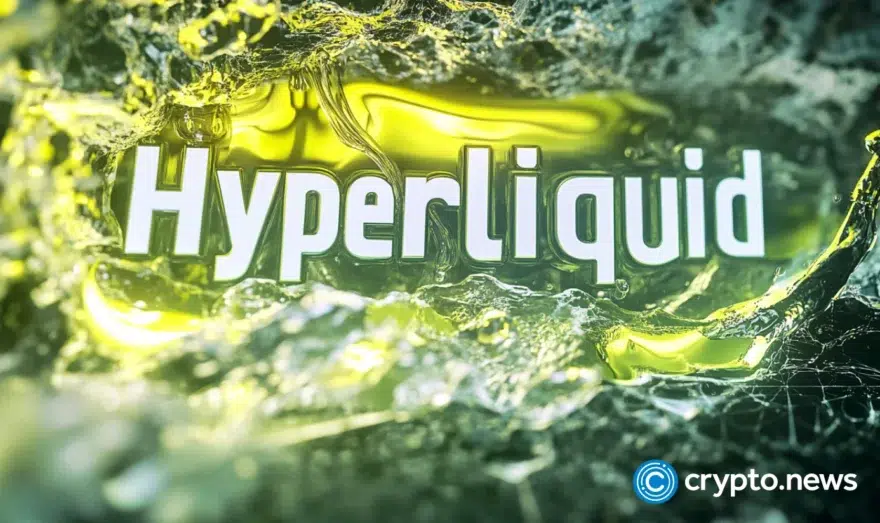What Is a DEX? A Beginner’s Guide to Decentralized Crypto Exchanges

Crypto trading isn’t limited to centralized exchanges like Binance, Gemini, and Coinbase. It can take place on decentralized crypto exchanges as well. But what is a decentralized exchange (DEX), how do they work, and why are they so popular? Read on to find out!
Table of Contents
What Is a DEX?
A decentralized exchange (DEX) is a peer-to-peer marketplace where users can trade crypto assets directly with each other without an intermediary facilitating the transfer and custody of funds.
Unlike centralized exchanges (CEXs), decentralized crypto exchanges are non-custodial, meaning users are in full control of their crypto assets’ private keys.
To a big extent, the crypto community has been relying on centralized crypto exchanges to trade decentralized digital assets, preventing the crypto ecosystem from being completely decentralized. Hence, DEXs have emerged with the aim of reducing systemic centralization risks in the crypto space.
DEXs run on blockchains, giving users the Web3 experience that’s non-existent on centralized crypto exchanges. Some DEXs may also “decentralize ownership across a community of distributed” token holders. This means that a decentralized autonomous organization (DAO) makes it possible for token holders to vote on important protocol decisions like funds allocation and protocol improvement.
The first DEX dates back to 2014. It was called Counterparty DEX and was built on the Bitcoin blockchain. The exchange did not receive much attention and slowly faded away. The next decentralized exchange, IDEX, was built on Ethereum and imitated the Counterparty model. It was launched in 2017 and was the first-generation Ethereum DEX. The following year, Bancor and Uniswap emerged, and more DEXs have followed since then.
There are over 200 DEXs in 2022, with Uniswap (v3) holding the largest market share by volume. According to Coingecko, millions of people visit DEXs each month. The 24-hour DEX trading volume, at the time of writing this article, was more than $3 billion. On the other hand, centralized exchanges recorded a 24-hour trading volume of over $300 billion.
How Does a DEX Work?
There are various DEX designs, but the most popular is the automated market maker (AMM). So, this guide will explain how AMM-powered DEXs work.
But before explaining what an AMM is, it’s important to understand how market making on centralized exchanges works.
Exchanges can fill the orders of their users because there are one or more centralized entities in the form of market makers. These are high-volume investors that “create a market,” providing liquidity to a crypto exchange. They are usually on the other end of a trade, ready to buy or sell a crypto asset. If there are no natural buyers or sellers, market makers will readily buy or sell the digital assets among themselves. In return for their service, market makers profit from the difference between the bid and ask prices of multiple trades. Trading professionals call this the bid-ask spread. Examples of crypto market makers are Galaxy Digital, Alameda Research, HedgeTech, Woorton, B2C2, and Jump Liquidity.
Liquidity is the ease at which a crypto asset can be quickly purchased or sold without affecting its market price. Therefore, you’re more likely to rapidly and without price impact buy or sell a cryptocurrency on an exchange with high liquidity than on an exchange with low liquidity. High liquidity also helps traders to get good prices for their trades.
Market making on DEXs is different. Here, three aspects are involved:
An Automated Market Maker Protocol
An AMM protocol is a type of smart contract that quotes the price between two or more assets. Smart contracts are self-executing codes that live on the blockchain. The AMM manages the trading activity of users on the DEX and determines the exchange rate of cryptocurrencies based on the trading activity in the pool.
A Liquidity Pool
A liquidity pool is a collection of digital assets locked in a smart contract. The AMM uses liquidity pools to allow traders to trade digital assets in a decentralized and autonomous way. When buying a digital asset on a DEX, for example, you’re executing a trade against the liquidity in the pool. A seller is not needed. All you need is sufficient liquidity in the pool.
Liquidity Providers
Liquidity providers (LPs) are market participants that fund liquidity pools with the crypto assets they own to facilitate trading on DEXs. In return, they get a fraction of the transaction fees from the trades taking place on the DEX and liquidity provider (LP) tokens, which represent their share in the pool. Liquidity providers earn more when they deposit more crypto to the liquidity pool. They also earn more, when there is more trading happening through their pool. Anyone can be a liquidity provider.
How to Buy Crypto on a Decentralized Exchange
Buying crypto on a DEX is a fast process because no signup is required. KYC is also not needed on DEXs.
You’ll need a wallet that is supported by the DEX you want to use. For instance, Ethereum-based DEXs support MetaMask. The wallet should also contain the crypto asset you’ll use to buy another coin. For instance, you can use ETH to buy DAI. Ensure you have enough ETH to cover transaction fees if you’re using an Ethereum-based DEX.
Below is the step-by-step process of buying crypto on a DEX.
- Open the DEX on your web browser.
- Click “Launch App.”
- Select your wallet, then connect it to the DEX.
- Choose the coins your want to swap.
- Complete the swap and wait for the coin you purchased to hit your wallet.
Best Decentralized Crypto Exchanges
Uniswap
Uniswap is an Ethereum-based decentralized exchange that uses an AMM. Anyone can use it to trade ERC-20 tokens. The protocol has a governance token called UNI. It enables community ownership and governance of the protocol.
Curve
Curve Finance is a DEX for stablecoins that runs on Ethereum and several other chains. It uses an automated market maker to manage liquidity. CRV is the in-house token for Curve’s DAO. CRV allows holders to vote on DAO proposals and to boost their rewards for providing liquidity on the exchange. CRV holders can also stake these tokens to earn trading fees.
Balancer
Balancer is an AMM-powered DEX on Ethereum that allows users to swap ERC-20 tokens. The Balancer governance token, BAL, allows holders to vote for decisions that affect the protocol.
Bancor
Bancor is another AMM-powered DEX on the Ethereum blockchain that enables instant token trading. The Bancor DAO oversees the protocol. Bancor’s token, BNT, helps users to provide liquidity to the available pools.
PancakeSwap
PancakeSwap is a DEX on BNB Smart Chain. It uses the automated market maker model. PancakeSwap permits users to trade any token on BNB Smart Chain (BEP-20 tokens) at low fees. Liquidity providers are incentivized with the protocol’s BEP-20 token, CAKE.
Pros & Cons of Trading on a Decentralized Exchange
Pros
- Self-custody: Users hold their own private keys, giving them full control over their assets. That means you won’t need to send your crypto assets to the exchange to trade them, as is the case with centralized crypto exchanges.
- More control over the safety of the crypto assets in your wallet: As long as you don’t share or lose your private keys, your crypto assets will remain safe in your wallet. On the contrary, users on centralized exchanges have to rely on these platforms to keep their crypto assets safe. This is risky and may sometimes lead to the loss of your holdings.
- Permissionless: Anyone with an internet connection, a smartphone or computer, and a compatible DeFi wallet can use a DEX. It doesn’t have geographical limitations like centralized crypto exchanges.
- Easy onboarding: DEXs don’t require users to go through account registration and the KYC process. That means they can connect a wallet and start trading immediately. CEX users, on the other hand, may wait for a few days to get KYC approval before they can trade.
- Web3 experience: DEXs provide users with a Web3 experience because the protocol is built on the blockchain, and trading takes place on-chain.
Cons
- Smart contract risk: Smart contracts may have bugs if the developer did not foolproof the code. This leaves the DEX susceptible to attacks if a hacker finds a way to exploit the weaknesses of the smart contract.
- Network risk: When the underlying blockchain network becomes congested, and gas fees increase, DEX users have no choice but to pay the high transaction fees.
- Liquidity issues: Some DEXs may have trouble maintaining sufficient liquidity if the platform isn’t popular enough since high liquidity attracts more liquidity and vice versa.
- Risk of centralization: Some levels of centralization may still exist on DEXs despite efforts to maximize decentralization. For example, administrative access to the DEX’s smart contracts may be limited to the development team.
FAQs
Which Blockchains Support DEXs?
There are various blockchains supporting decentralized exchanges. They include Ethereum, BNB Smart Chain, Avalanche, Cardano, Tezos, Fantom, Cronos, Solana, Tron, and Arbitrum, among others. Any blockchain that supports smart contracts can act as an infrastructure for decentralized trading venues.
How Does a DEX Make Money?
Decentralized exchanges typically charge trading fees that are automatically taken out of each trade by the smart contract, enabling DEXs to generate revenue.
Is Binance a DEX?
No. Binance is not a DEX. Binance.com is a centralized crypto exchange. However, Binance has created BNB Smart Chain, which is an EVM-compatible smart contract platform that is home to numerous decentralized exchanges that enable users to trade BEP20 tokens.
What is the Future of DEXs?
DEXs may improve for the better as blockchain networks like Ethereum solve low transaction speeds and high transaction fees. For instance, users have to bear high gas fees when using DEXs on Ethereum. Also, DEXs could acquire more market share in relation to CEXs because of their easy onboarding process, improved user experience, and more appealing trading experience.














